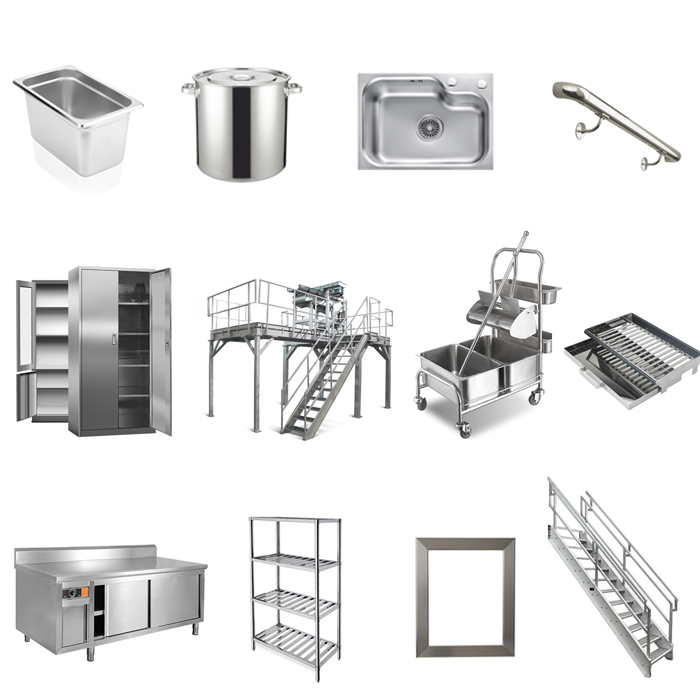Innovative Fads in Steel Construction: Enhancing Longevity and Accuracy
In the world of steel manufacture, the quest of longevity and precision has caused a wave of cutting-edge patterns that are improving the industry. From innovations in welding modern technologies to the integration of robot automation in fabrication procedures, the landscape of steel production is developing quickly. High-strength alloy development, coupled with the utilization of 3D modeling and simulation software application, is pushing the boundaries of what is possible in terms of architectural honesty and accuracy. Furthermore, the growing emphasis on lasting techniques in steel manufacturing is not only driving efficiency yet also fostering a more ecologically aware method to fabrication. These trends are not simply shaping the present yet likewise laying the foundation for the future of steel manufacture, promising additional enhancements in longevity and accuracy.
Advanced Welding Technologies
In the world of steel fabrication, the adoption of innovative welding technologies has dramatically transformed the market's approach to accomplishing remarkable high quality and accuracy in structural welds. Advanced welding modern technologies, such as laser beam welding and rubbing mix welding, have actually emerged as game-changers in the area. By leveraging these innovative welding methods, steel fabricators can boost the sturdiness, toughness, and precision of their structural welds, satisfying the significantly demanding needs of contemporary building jobs.
Robot Automation in Construction
Accepting robot automation has actually become a foundation of modern steel construction methods, streamlining processes and enhancing performance throughout the industry. Robots are reinventing the way steel components are made, offering unrivaled precision and rate while reducing human error. These automated systems can handle repeated jobs with constant accuracy, bring about higher quality output.
One trick advantage of robotic automation in steel construction is the capacity to work all the time without fatigue, significantly enhancing production result. This continual operation lessens downtime and speeds up project timelines, inevitably saving costs for manufacturers. In addition, robots can be configured to execute detailed tasks that might be hazardous or challenging for human employees, improving safety and security in the office.
Moreover, robotic automation allows seamless integration with various other electronic modern technologies, such as computer-aided design (CAD) software application and Web of Points (IoT) systems (steel fabrication melbourne). This interconnected method boosts interaction in between various stages of construction, enhancing workflows and making sure real-time monitoring and control. As the steel construction market continues to develop, robot automation stands apart as a transformative force driving performance and precision in manufacturing procedures

High-Strength Alloy Advancement
The improvement of high-strength alloy development in steel construction is improving the industry's technique to enhancing product resilience and performance. High-strength alloys are engineered to display exceptional mechanical residential properties, such as enhanced tensile stamina, durability, and deterioration resistance contrasted to traditional steel qualities. By check these guys out integrating these sophisticated alloys right into fabrication processes, makers can produce elements that hold up against greater anxiety levels and severe atmospheres, resulting in more resilient and trusted output.
One trick advantage of high-strength alloy growth is the ability to reduce material density without endangering architectural stability. This not just leads to lighter-weight components but likewise adds to set you back savings and enhanced efficiency in fabrication and setting up procedures. Furthermore, the enhanced strength-to-weight proportion of these alloys enables the layout and building of frameworks with greater load-bearing capabilities while minimizing overall weight.
3D Modeling and Simulation Software Program
Advancements in steel construction processes have actually he said been considerably moved by the assimilation of advanced 3D modeling and simulation software program devices. These tools permit makers to produce detailed virtual models of their tasks, allowing them to imagine the final product with accuracy prior to any kind of physical job begins.

Lasting Practices in Steel Production
Integrating sustainable techniques right into steel production procedures is necessary for decreasing ecological influence and making sure lasting resource availability. One crucial lasting method is the adoption of energy-efficient innovations to decrease greenhouse gas emissions during the steel production procedure. This consists of making use of renewable resource sources, such as solar or wind power, to power steel plants and executing energy-efficient tools to optimize power usage.
An additional critical aspect of sustainable steel manufacturing is the liable sourcing of raw products. This includes making sure that the iron ore and other sources made use of in steelmaking official website are gotten from ethical and eco-friendly resources. By advertising openness in the supply chain and adhering to strict ecological standards, steel makers can reduce the adverse effects of source extraction on regional ecological communities and neighborhoods.

Conclusion
To conclude, the ingenious patterns in steel fabrication such as sophisticated welding modern technologies, robot automation, high-strength alloy growth, 3D modeling and simulation software, and sustainable methods are improving the sturdiness and accuracy of steel products. These improvements are reinventing the steel manufacture sector by enhancing performance, sustainability, and quality. It is clear that the future of steel fabrication depends on embracing these sophisticated modern technologies to meet the demands of contemporary construction and production industries.
In the world of steel fabrication, the quest of sturdiness and accuracy has led to a wave of innovative trends that are improving the market.In the realm of steel construction, the fostering of cutting-edge welding technologies has actually substantially transformed the sector's approach to attaining remarkable quality and accuracy in architectural welds. As the steel construction industry proceeds to advance, robotic automation stands out as a transformative pressure driving performance and accuracy in producing processes.
In addition, recycling and recycling steel scrap and waste products play a substantial duty in improving the sustainability of steel production. Alpha reo.In final thought, the cutting-edge trends in steel construction such as innovative welding technologies, robot automation, high-strength alloy growth, 3D modeling and simulation software application, and lasting practices are enhancing the longevity and accuracy of steel items